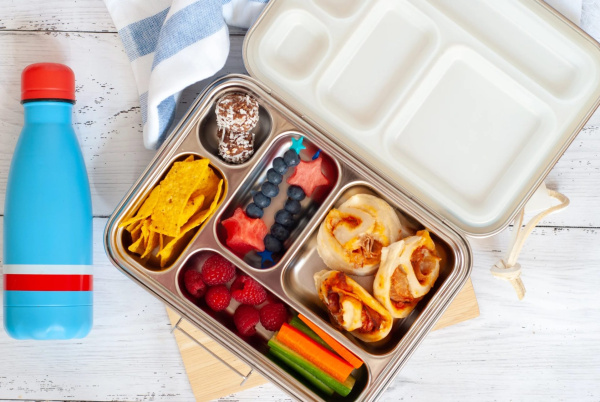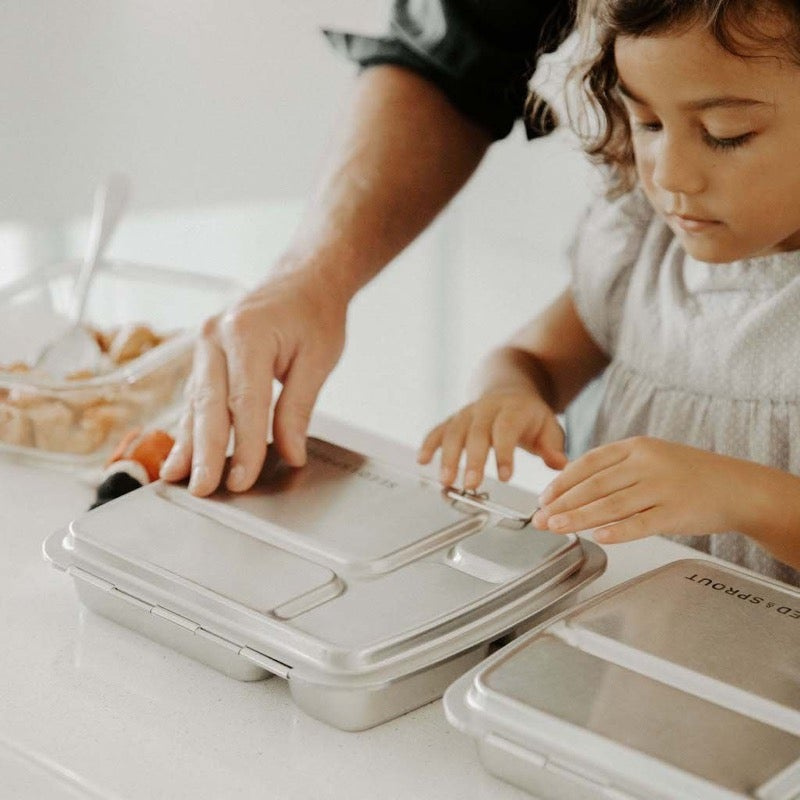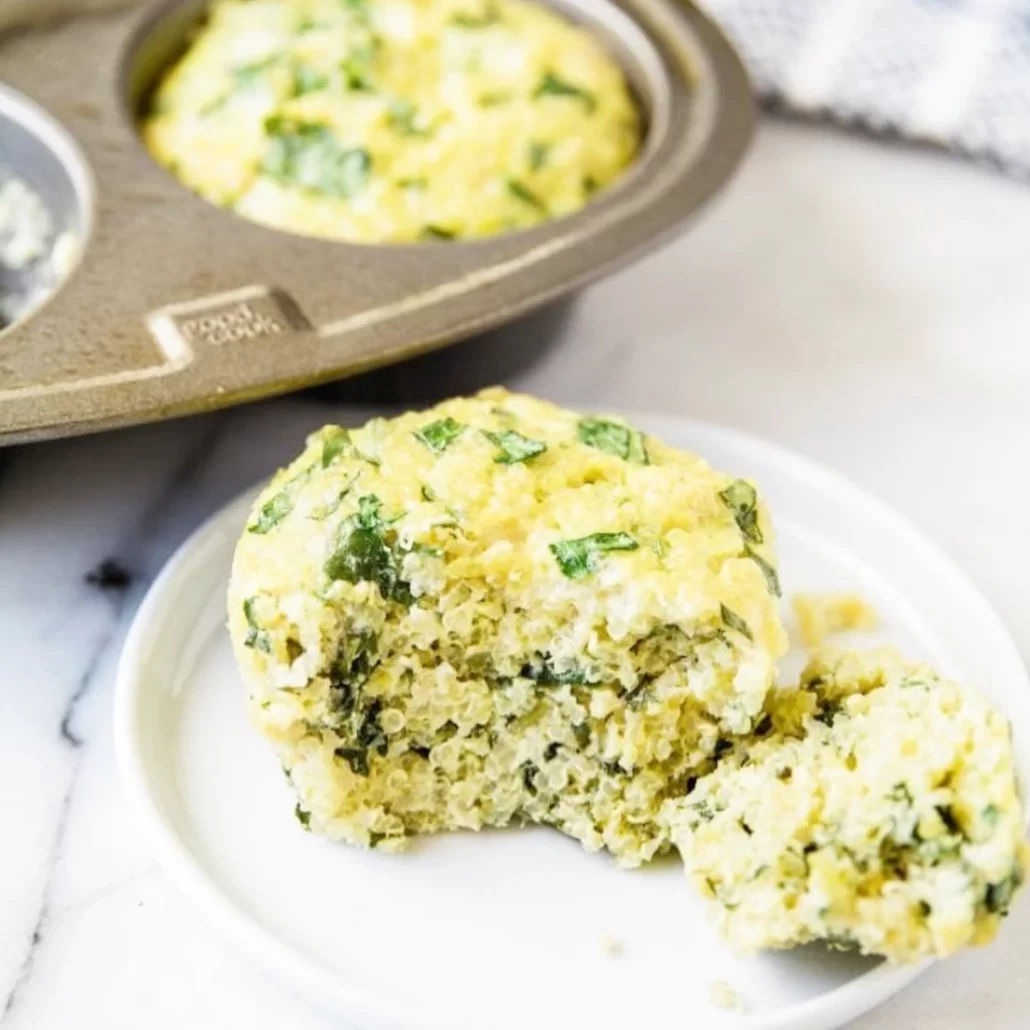
With a little bit of weekend organisation, a healthy lunchbox isn't so far out of reach. Image Nudie Rudie Lunchboxes
- Kids
How to pack a healthy, wholesome lunchbox
Back to school healthy hacks
By G+S kids health expert Kellie Montgomery
As our kids return to school, for many of us, it means a return to lunchbox making. In one year, we’ll pack around 200 lunchboxes , per child! (Give or take a few, I’m definitely partial to a canteen order once a week.) Nevertheless, that’s a lot of lunchboxes. Over the course of a school week, your child will eat around 30 per cent of their daily intake of food at school. As a nutritionist, I see that as an excellent opportunity to get your child eating food to support their learning, their immune system, their growth, and their behaviour.
A healthy, wholefood lunchbox will:
– Support your child’s focus and attention
– Provide your child with a stable release of energy
– Support your child’s blood sugars to foster a stable mood
– Meet your child’s nutrient needs for healthy growth & immune function

Top tips for building a wholefood lunchbox
Keep it simple
Wholefoods don’t have to be fancy, or complicated. Look for ways that you can add to your child’s lunchbox to improve the nutrient quality of foods they already eat. Simply swapping a supermarket sandwich loaf for a wholemeal spelt sourdough is a great step to improving the nutrition for a child who prefers to eat a sandwich everyday. Try adding some grated carrot and/or avocado to a plain ham sandwich. (The trick here for fussy eaters, is to start very, very small!) Sending leftovers in a thermos is another great idea that saves on preparation time, & the bonus is that dinner usually includes protein and vegetables; making for a well-balanced lunch. Foods like pulse pasta with beef bolognese, or cold home-made pizza.
Include some protein
Adding protein to your child’s lunchbox will help keep them feeling full (preventing those after school hangries!), but protein is also critical for your child’s immune health, growth and will support better concentration & focus. One of the most important nutrients affecting children’s development, growth & behaviour (& the most common nutrient deficiency that I see in clinic) is iron, and our protein foods are generally where we find our iron. Think leftover roast chicken in a sandwich, hummus on the side of veggie sticks or crackers, boiled eggs, grilled tofu, quinoa & vegetable frittata muffins, or a leftover sausage from dinner.
Include a serve of healthy fats
Fats are essential to our children’s brain health, and their ability to concentrate and learn; so quality fats are important to include in a lunchbox. Look for ways to include some avocado, seeds (& nuts if permitted at the school), eggs, fish, cheese, or full fat natural yoghurt.
Include plenty of high fibre foods
Fibre is so underrated when discussing our children’s nutritional needs, but it is so critical to their gut health, and also really helpful to fill them up, and slowing the release of energy from our food. Most of us don’t eat enough fibre, and most kids don’t eat nearly enough vegetable-based fibre. We find our fibre in all our vegetables, fruits, wholegrains and legumes and for optimal health, we want our children to be eating a wide variety of different fibres. Try to include some vegetables and a piece of fruit to your child’s lunchbox every day, & mix them up if you can. Leftover potatoes offer a particularly important type of fibre called resistant starch, so next time potatoes are on the menu, cook a few extra for the next day’s lunchbox.
Pack it plastic free
Opt for stainless steel or bamboo lunch and drink containers, where you can. The reason is that most plastic (including both plastic cling wrap and hard plastic containers) have toxic components in them that can leach into our food and, over time, disrupt our kids’ hormone health. I did a talk to a community of preschool parents last year, and when a parent mentioned yoghurt pouches, one of the educators grabbed a large box of yoghurt pouch rubbish that had accumulated over the course of just one week; it was shocking to see the volume of it! (And from a nutritional point of view, I’m really not a fan of the type of yoghurt used in the pouches, either.) If you have a child who’s a fan of the yoghurt pouch, experiment with the reusable ones – blending mango with full fat natural yoghurt is a delicious way to introduce them to eating regular natural (& properly fermented) yoghurt. For kids who are good with a spoon, put some natural yoghurt into a thermos with a drizzle of honey & some chopped fruit.
Think outside the (sandwich) box
There’s nothing inherently wrong with a sandwich, but our aim is to get our children eating as much variety in their diet as we can. And it’s often easier to add vegetables and legumes into foods that aren’t a sandwich. Savoury cheese & pumpkin buckwheat muffins, a thin omelette turned into a wrap with whatever your child likes inside, tuna rice paper rolls, lamb & vegetable spelt sausage rolls. Sure, most of these take more time to prepare than a sandwich, but if you spend a bit of time in the kitchen on the weekend, it can make those lunchbox packing mornings much easier when you’re simply grabbing something nutritious out of the freezer!
What to leave out
Leave out highly processed, packaged food wherever you can. Generally, highly processed food that comes in a packet provides a hit of quick release energy (due to its refined carbohydrate content) but very little in the way of actual nutrients. The intense flavours in a lot of processed food can also affect your child’s taste buds over time – meaning your child will be less likely to want to eat plainer tasting foods, like broccoli. When you’re short on time, and need to have a supply of supermarket packet snacks on hand, get into reading labels, and opt for those made from wholefoods – there are some excellent choices out there. Seaweed is great (and counts as a vegetable!), roasted chickpeas, munch me pumpkin seed bites to name a few.
Quinoa Egg Muffins
Ingredients
3 cups cooked quinoa (any colour will do)
4 eggs
1 cup cheese (I use parmesan)
2 cloves garlic, crushed
2 shallots, finely diced
1 cup baby spinach
1 zucchini, finely grated
Handful parsley, finely chopped
Method
Combine all the ingredients, scoop into patty pans in a greased muffin tray, & pop into a preheated oven at 180 degrees for around 20 minutes.

